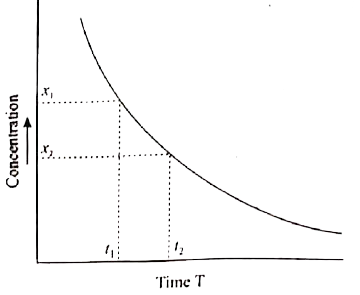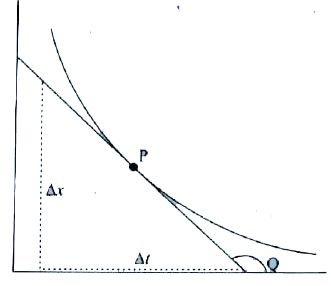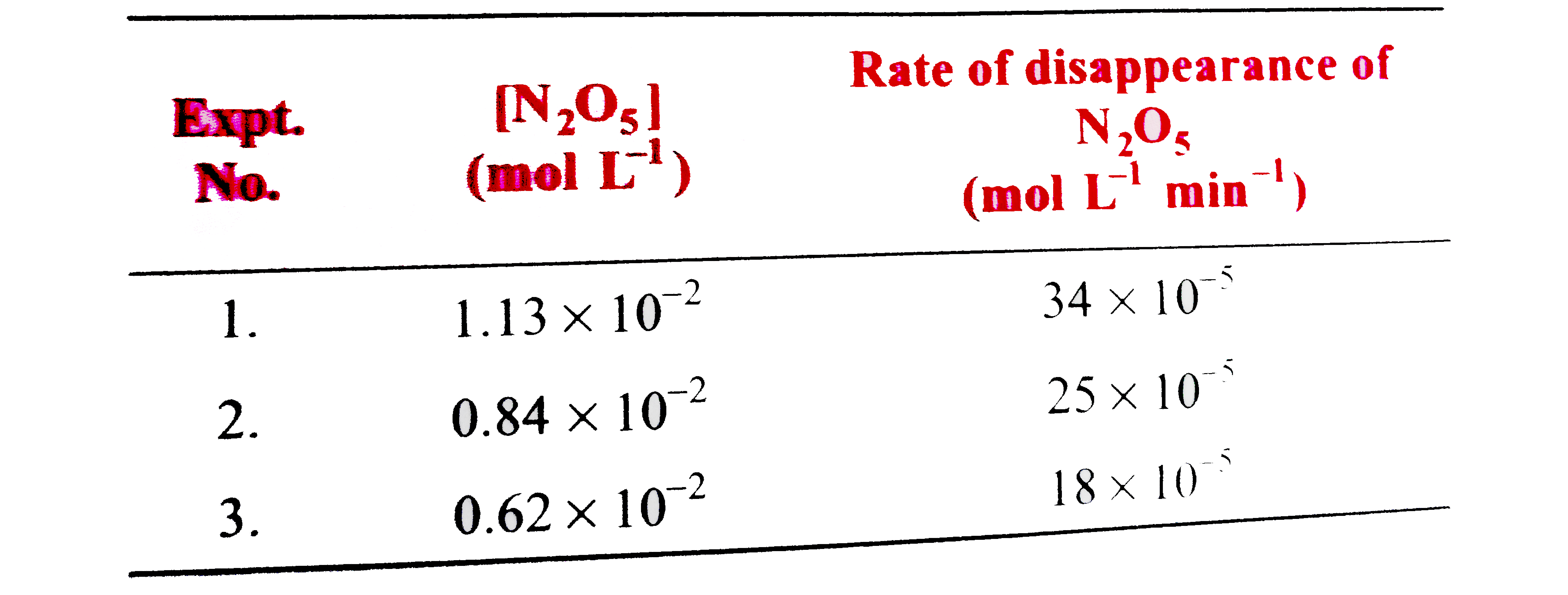Explain how will you determine experimentally determine (i) average rate of reaction (ii) instantaneous rate of reaction and ( iii) initial rate of reaction.
The changes in concentration of the reactants or products is experimentally determined by withdrawing a small portion of the reaction mixture (usually 2 or 5 ml) at suitable intervals of time, and then freeze to about 0∘C as to stop or product ismeasured by a suitable method. A plot of concentration time is made from the graph, the average rate, instantanecous and initial rates can be determined.
(i) Average rate: Two equivalent points are taken with respect to time at which the average rate to be determined. The concentrations corresponding to these points are noted from the graph. The difference in concentration is divided by the time internal between equi distant points. Two equidistant point with respect to T is selected. Let these be .t1. and .t2. respectively. The corresponding concentrations are x1 and x2 respectively.
Average rate =(x2−x1)(t2−t1)=ΔxΔt

(ii) Instantaneous rate of reaction : For the determination of instantaneous rate of reaction at any time .t., a tangent is direction to the curve at the point .P. corresponding to that time. The slope of this tangent gives the instantaneous rate of reaction.

Instantaneousrate of reaction}= slope of the curve
=Intercept along the ordinateIntercept along abscissa
=ΔxΔt=tanθ
Where Q is the angle of tangent with time axis.
In a similar manner, the rate of formation of the product can be determined by measuring the slope of the tangent at a particular instant in concentration to time curve.
(iii) Initial rate of reaction:

The rate of reaction is maximum at the time of mixing the concentration. This cannot be determined experimentally. This is determined from the concentration is time curve. The curve is extrapolated to zero time and the slope of this curve at zero time gives the initial rate of the reaction.
ΔxΔt= initial rate.
Topper's Solved these Questions
- BOOK - PREMIERS PUBLISHERSCHAPTER - CHEMICAL KINETICS EXERCISE - OTHER IMPORTANT QUESTIONS & ANSWERS (I. Choose the correct answer.)28videos
CHEMICAL KINETICS
- BOOK - PREMIERS PUBLISHERSCHAPTER - CARBONYL COMPOUNDS AND CARBOXYLIC ACIDSEXERCISE - OTHER IMORTENT QUESTIONS & ANSWERS (ANSWER THE FOLLOWING QUESTIONS)88videos
CARBONYL COMPOUNDS AND CARBOXYLIC ACIDS
- BOOK - PREMIERS PUBLISHERSCHAPTER - CHEMISTRY IN EVERYDAY LIFEEXERCISE - OTHER IMPORTANT QUESTIONS& ANSWERS (ANSWER THE FOLLOWING QUESTIONS)63videos
CHEMISTRY IN EVERYDAY LIFE
Similar Questions
Knowledge Check
- Question 1 - Select One
The rate determining step of a reaction is the step
Awhich involves the minimum number of moleculesBwhich involves the maximum number of moleculesCwhich is the slowestDwhich is the fastest
Explain the difference between instantaneous rate of a reaction and average rate of a reaction .
View SolutionExplain the difference between instantaneous rate of a reaction and average rate of a reaction .
View SolutionDifferentiate between :Average rate and instantaneous rate of a chemical reaction.
View SolutionExplain the following terms:
(i) Rate of a reaction (ii) Activation energy of a reactionView SolutionAverage rate of reaction does not give the true picture of the reaction rate. Explain.
View SolutionWhat is the rate determining step of a reaction ?
View SolutionThe reaction ,
2N2O5→4NO2+O2
was studdied and the following data were collected :

Determine (i) order the reaction (ii) the rate law and (iii) rate constant for the reactionView Solution

